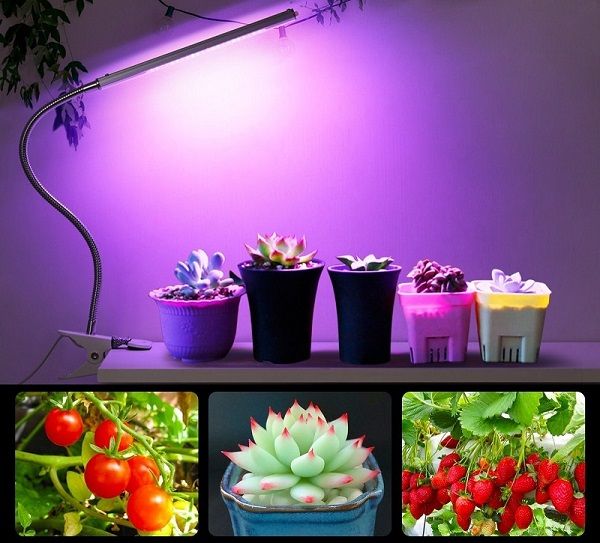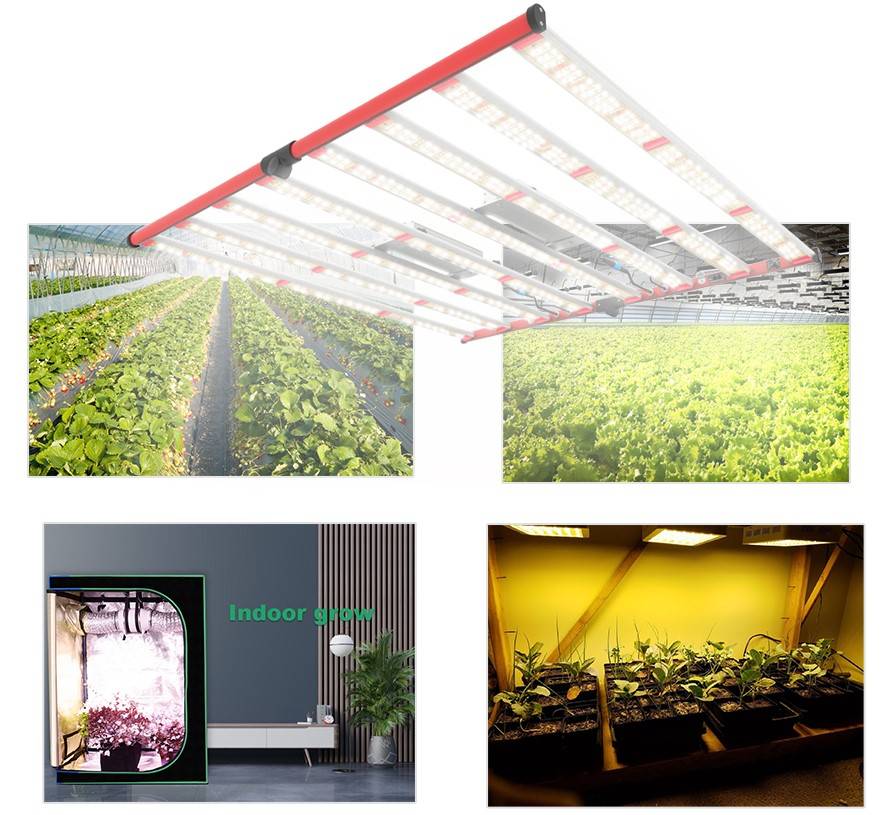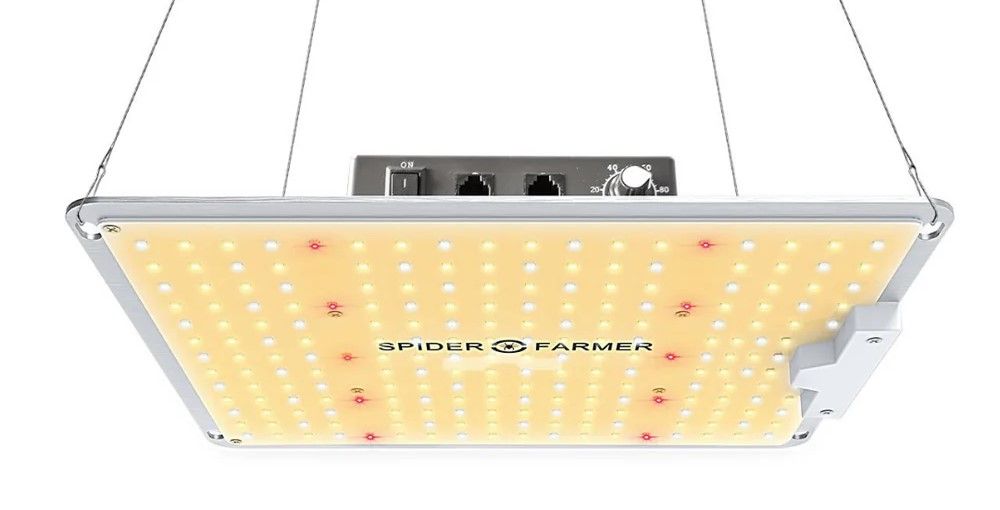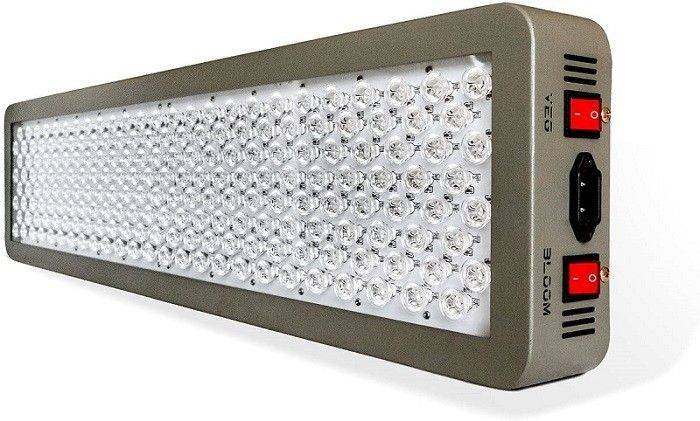Every person on the planet knows –or at least should know how important plants are for Fresh Food, Decor, Enjoyment, and many more. I have always considered them special. With a little care, plants can adorn your house or the fallen land next to your house, or you can grow plants commercially.

Plants require water, carbon dioxide, and light to grow. But in different regions or situations, the light can be scarce. It’s important for gardeners to know how they can take care of their plants in low light conditions. So, I decided to put this article to make clear your concept about what is a Grow Light for plants & Types of grow lights for indoor plants. So, let’s get at it.
Table of Contents
Understanding What is a Plant Grow Light
A grow light –sometimes called a plant light is any form of artificial illumination that emits light which is appropriate for plants’ photosynthesis to support their growth and development. Natural sunlight is usually sufficient for outdoor plants, but indoor plants often require supplemental lighting, especially managing a greenhouse or during the darker months or in areas with limited sunlight.
Artificial lights are appropriate for photosynthesis when they emit a light spectrum similar to the Sun. Some are even specially tailored for the requirements of a particular type of plant.
So, grow lights attempt to provide a spectrum similar to the sun, or to provide a light spectrum that is progressively customized to the requirements of the plant growth. Andrei Famintsyn (Russian Botanist) was the first to use artificial light In 1868 for indoor plant growing and research.
Types of Grow Lights for Indoor Plants
- High-Intensity Discharge (HID)
-
- High-Pressure Sodium (HPS)
- Metal Halide (MH) and
- Ceramic Metal Halide (CMH)
- Fluorescent Light (CFL)
-
- Tube-style Fluorescent light and
- Compact fluorescent lights (CFL)
- LED (Light Emitting Diode)
Please follow the chart below if you don’t have enough time to go into detail:
| Dependable & trustworthy technology | Low light output | Customizable full light spectrum |
| Impressive results with high yields | Easy to set up (good for beginners) | Produce higher yields, but older/cheaper models can perform worse |
| Good for large-scale growers | Adequate for very small grows or seedlings | Good for all types of growers |
| Lower initial investment | Lowest upfront cost | High initial setup cost |
| Support full growth cycle | Not optimal for full-cycle growth | Support full-cycle growth |
| Bulbs need to be replaced annually | Shorter lifespan | Longer lifespan |
| Higher electricity bill | Uses little electricity | Most energy efficient |
| Produce a lot of heat | Low heat output | Produces less heat |
High-Intensity Discharge (HID): Low Setup Cost
HID grow light is a bulb that generates brilliant light by passing electricity through a gas-filled tube with two electrodes inside. Due to low setup cost, HID is a popular choice among novice growers.
You will find three types of HID grow lights used in indoor gardening–
- High-Pressure Sodium (HPS)
- Metal Halide (MH) and
- Ceramic Metal Halide (CMH)
You can use anyone out of the three for all growing stages from seeding to harvest. But it’s recommended to start with MH or CMH and then move to HPS for the flowering phase.
HID provides high-intensity light for large-scale growing, but consumes more energy.
Fluorescent Light (CFL): Good for Beginners
Fluorescent grow lights are another popular lighting option for indoor gardening. Due to emitting less light than HIDs, they are often used for seeding, and early to mid-stage of plant growth.
Two popular types of fluorescent lights are commonly used for indoor plants.
- Tube-style Fluorescent light and
- Compact fluorescent lights (CFL)
Fluorescent lights are a cost-effective solution for beginners and a good option as supplementary bulbs for experienced gardeners. But this can be used throughout all growth stages for a small setup.
It’s recommended to switch to HPS or LED grow lights during the flowering stage for better results, as they deliver significantly higher yields.
Exploring What are LED Grow Lights for Plants
Unlike traditional light bulbs, LED plant lights are designed to produce precise wavelengths, including red and blue, that are most effective for plant growth. LED stands for “light-emitting diode” to provide very specific lights that plants need to thrive in the absence of enough sunlight.
Modern LED grow lights are “full spectrum,” covering all the wavelengths plants require from their initial seeding to final harvest. So, whether you want to grow herbs on a windowsill or a full-blown hydroponic system, LED grow lights offer an incredibly efficient and customizable light spectrum that’s perfect for plant photosynthesis.
The second key advantage is its lower operating cost. Considering power consumption capability with older technologies like fluorescent or HID (high-intensity discharge) grow lights, LEDs really shine. So at the same time, it will save your money, produce less heat, and be eco-friendly as well.
Another major benefit is their impressive lifespan. Quality LED grow lights provide extended usage of 50,000 hours or even more, which means users can enjoy several years of consistent use without needing any replacement. Besides this, many LED grow light models come with convenient features like dimmable brightness, built-in timers, and adjustable spectrums, allowing growers more control over lighting conditions.
Along with large-scale hydroponic or vertical farming, LED grow lights have taken off among urban gardeners, apartment dwellers. This technology enables it to grow fresh herbs, vegetables, or even ornamental plants year-round, regardless of your local weather or access to outdoor space.
The Final Verdict on What is a Grow Light
In areas with limited sunlight or during darker seasons, grow lights are an invaluable tool for supporting plant growth. Especially LED grow lights step will fill the gap of low light conditions, mimicking the sun’s light by providing the right spectrum of light.
So you can dramatically improve your plant-growing success using grow lights, whether you’re growing herbs on a kitchen shelf or managing a large indoor garden.






